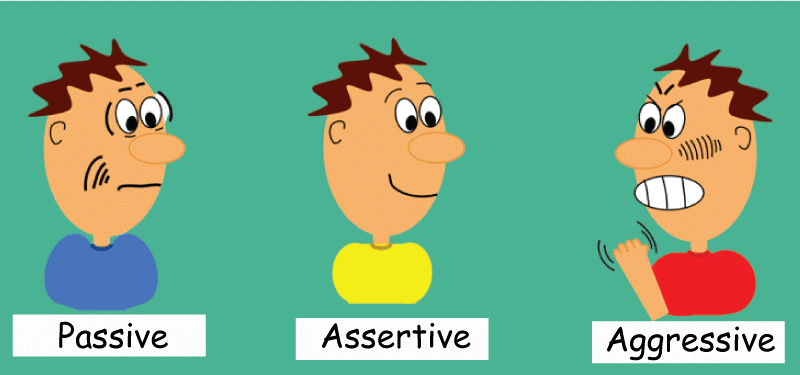Behavior Definition
Behavior is defined as an individual's or a group's activities, responses, and behavior toward their surroundings, fellow humans, or external events. It significantly impacts our social and personal connections, decision-making, and general wellness, making it an important part of human and animal existence.

Categories of Behavior
Human behavior can be classified into multiple categories depending on various factors. We'll review a few major behavioral types in this article.
Overt and Covert Behavior- Overt behavior can be observed and noticed, while covert behavior is hidden. While eating, walking, and speaking are examples of overt behavior, thoughts, feelings, and opinions are examples of covert behavior. Covert behavior can be difficult to identify and evaluate, unlike overt behavior, which is simple to see.
Voluntary and Involuntary Behavior- Voluntary behavior is within conscious control, whereas involuntary behavior is not. For instance, speaking is a voluntary behavior, but breathing is an involuntary behavior. While certain involuntary habits, such as holding your breath for a short period, are somewhat manageable, ultimately, they become uncontrollable.
Prosocial and Antisocial Behavior- Prosocial behavior benefits others, whereas antisocial behavior damages others. In contrast to antisocial behavior, which includes aggressive, bullying, and thieving behaviors, prosocial behavior entails assisting, sharing, and collaborating. Prosocial behavior is necessary for social peace and beneficial connections, whereas antisocial behavior can have harmful implications for people and society.
Positive and negative behavior- Positive behavior benefits the person or others, while negative behavior causes harm to them. Kindness, empathy, and thankfulness are examples of positive behavior. Anger, selfishness, and envy are examples of negative behavior. While negative behavior can result in psychological suffering and social issues, positive behavior is linked to improved mental health and general wellness.
Adaptive and maladaptive behavior- Adaptive behavior assists an individual in adjusting to their environment and dealing with problems, whereas maladaptive behavior hinders their capacity to operate efficiently. Maladaptive behavior comprises actions like substance addiction, procrastination, and self-harm, whereas adaptive behavior includes abilities like problem-solving, communication, or handling emotions. Maladaptive behavior can have detrimental effects, whereas adaptive behavior is necessary for personal and professional success.
Learned and inherent Behavior- Learned behavior is that which is gained by experience and observation, but inherent behavior is that which is inherited genetically. Reflexes and instincts are examples of innate behavior, whereas language, social standards, and cultural values are examples of learned behavior. In contrast to learned behavior, which may be changed via instruction and training, inherent behavior is often constant.
Verbal and Non-Verbal Behavior- Non-verbal behavior encompasses communication through facial expressions, gestures, & body language. Verbal behavior comprises all types of communication that use words, such as speaking, writing, or sign language. Because it discloses the person's underlying feelings and views, nonverbal behavior is frequently more illuminating than spoken activity.
How Can Behavior be Modified?

Behavior modification is the process of altering someone's behavior through various strategies, such as modeling, punishment, positive reward, negative reinforcement, and cognitive-behavioral therapy. By changing the environment and giving the person the appropriate knowledge and resources, behavior modification aims to promote positive behavior and deter undesirable behavior.
The following are a few techniques for changing behavior:
- Positive Reinforcement- Positive reinforcement is a strategy that includes praising or penalizing good behavior, for instance, congratulating a youngster for finishing their schoolwork or rewarding a dog for following instructions. Individuals are encouraged to repeat the desired action via positive reinforcement, which is associated with beneficial results.
- Negative Reinforcement- Negative reinforcement includes eliminating a negative consequence when a person demonstrates the desired behavior. For instance, eliminating an unpleasant task when a kid finishes their schoolwork or turning down a loud noise when a dog follows instructions. Negative reinforcement motivates people to continue the desirable action by linking it to averting unpleasant outcomes.
- Punishment- Punishment entails imposing a painful penalty for wrongdoing. Two examples are giving a dog a timeout for violating an order or reprimanding a youngster for misbehaving. Punishment prevents people from engaging in an unwanted activity because it links it to unpleasant outcomes.
- Model- Demonstrating the desired behavior while encouraging others to replicate it is known as modeling. Using the example of a teacher solving a math problem or a parent exhibiting effective communication. Individuals are encouraged to mimic the desired behavior by being given a clear example through modeling.
Factors Influencing Behavior
A person's behavior can be affected by various variables, including genetic, environmental, social, and cultural ones. An explanation of each of these elements can be found below:
- Genetic factors- Genetics can greatly impact how someone behaves. Genetic qualities passed down from generation to generation can impact or be inherited by certain behaviors. For instance, certain individuals may be genetically predisposed to violence or addiction, which might influence their behavior.
- Environmental factor- Environmental conditions can also influence behavior. A person's physical surroundings might include things like their housing situation, the weather, and pollution. Social variables, including peer pressure, family relationships, and cultural standards, can also be a part of it. The environment has several possible impacts on behavior, including forming values, attitudes, and beliefs.
- Social Factors- Peers, family, and other social groups can all significantly affect behavior. For instance, a person's ideas and actions may be influenced by the values and behaviors of their parents. Peer pressure may also impact behavior since people tend to imitate the attitudes and actions of their peers.
- Cultural factors- Cultural factors can also influence conduct. Different norms, values, and beliefs exist within many cultures and can affect behavior. For instance, certain cultures can place more value on collectivism and harmony within the group, while others would place more importance on individuality and self-expression.
- Learning- Learning has the power to change behavior. People are capable of picking up new habits and behaviors via experience. Observational learning, operant conditioning, & classical conditioning are several ways learning may take place. For example, individuals may identify a particular behavior with a certain reward, which encourages them to repeat it in the future.
- Motivation- Motivation may affect behavior as well. A person's motivation determines how they will respond in a given situation. Different behaviors result from various motives. For instance, a person driven by a desire for success may act differently from someone driven by a fear of failing.
- Personality- A person's character may influence how they behave. Personality qualities like extraversion, agreeability, and conscientiousness can affect a person's behavior. For instance, a person who scores well on agreeableness would be more inclined to practice ethical behavior. Still, a person who scores highly on extraversion might be more willing to seek out social contacts actively.
- Age- Aging can have an impact on behavior. Due to variations in cognitive, emotional, & social development, children and adolescents may act differently from adults. Children, for example, may exhibit aggressive behavior due to a still-developing prefrontal brain.
- Gender- Gender may influence behavior as well. Biological, social, & cultural variables can all impact gender variations in behavior. For instance, societal and cultural standards of masculinity may make men more willing to act risk-takingly.
- Health- A person's physical well-being might influence their behavior. Behavior can be affected by some illnesses or health problems, such as addiction, anxiety, or depression. Furthermore, lifestyle elements, including nutrition, exercise, & sleep, can affect behavior.
Why is Understanding Behavior Important?
Understanding behavior is vital in many domains, including psychology, neurology, animal behavior, education, & medicine, to name a few. Here are a few explanations:
- Psychology- It is the scientific study of behavior and thought. To better understand how people think, feel, and act in different contexts, psychologists must have a solid understanding of behavior. Then, using this understanding, interventions, and therapies are created to address mental health problems, enhance interpersonal interactions, and boost general well-being.
- Neuroscience- The study of the nervous system, which includes the brain and spinal cord, is referred to as neuroscience. Because it advances our knowledge of the brain mechanisms underlying behavior, understanding behavior is crucial to neuroscience. This information may be utilized to create therapies for neurological & psychiatric conditions and further our knowledge of the brain and its operations.
- Animal Behaviour- The study of an animal's behavior in its natural habitat is known as animal behavior. Behavior analysis is crucial in this area because it enables researchers to understand how animals interact with one another and their surroundings. The well-being of animals, conservation efforts, and our comprehension of nature may all be improved with the help of this information.
- Education- Behavior analysis is crucial in the classroom because it gives teachers a better understand of how children learn and act. This information may be used to construct engaging teaching methods, motivate students, and provide a pleasant learning environment.
- Medicine- It's critical to comprehend behavior for medical professionals better to comprehend patients' thoughts, feelings, and conduct. By creating efficient therapies for mental health conditions, addressing the behavioral variables that lead to physical health problems, and enhancing patient-provider communication, this information may be leveraged to improve patient outcomes.
- Business- It is crucial for managers and leaders to thoroughly understand how consumers and workers think, feel, and act. This information may be utilized to design powerful marketing campaigns, enhance company culture, and boost employee engagement and productivity.
- Law- It is crucial to understand behavior for attorneys, judges, and other legal experts to fully comprehend the motives and acts of the people who are parties to legal disputes. This information may create strong legal defenses and enhance results in criminal and civil trials.
Conclusion
Ultimately, behavior is an important component of human and animal existence that determines our relationships, decision-making, and general well-being. It may be divided into several types, affected by several variables, and changed using several different methods. To promote positive outcomes and raise the quality of life, the behavior must be understood.
|


 For Videos Join Our Youtube Channel: Join Now
For Videos Join Our Youtube Channel: Join Now










